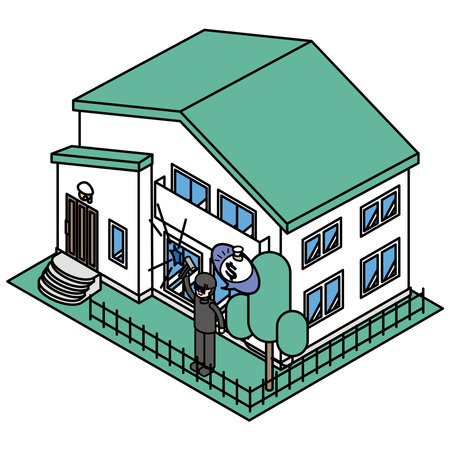1. Understanding Feng Shui and Sustainability
Feng Shui, an ancient Chinese practice, focuses on creating harmony between people and their living spaces. It’s all about how the arrangement of your home can affect your mood, well-being, and overall energy flow. At its core, Feng Shui values balance, natural elements, and a healthy connection with the environment. In recent years, these principles have found common ground with the growing movement towards sustainability in American homes.
The Basics of Feng Shui
Feng Shui is centered on the concept of “Qi” (pronounced “chee”), which means life force or energy. The goal is to optimize the flow of Qi by thoughtfully arranging furniture, using specific colors, and choosing materials that promote balance and comfort. These practices not only enhance a home’s atmosphere but also encourage mindfulness in how we interact with our surroundings.
Key Principles of Feng Shui
| Principle | Description |
|---|---|
| Balance of Elements | Incorporates wood, fire, earth, metal, and water for harmony. |
| Qi Flow | Ensures energy moves freely throughout the space. |
| Natural Light and Air | Maximizes sunlight and ventilation for positive energy. |
| Simplicity & Decluttering | Keeps spaces organized to avoid stagnant energy. |
| Connection to Nature | Brings natural elements indoors for well-being. |
Sustainability: A Modern Value
Sustainability is about making choices that are good for both people and the planet. This means using materials that are renewable, recycled, or responsibly sourced—practices that reduce environmental impact and support long-term health for families and communities. Many American homeowners today are interested in eco-friendly options that reflect their values while still feeling at home in their personal spaces.
The Synergy Between Feng Shui and Sustainability
Feng Shui’s emphasis on natural materials, thoughtful design, and mindful living aligns naturally with sustainable values. By choosing materials that are both beautiful and eco-conscious—like bamboo flooring instead of plastic laminates or reclaimed wood for furniture—you’re honoring ancient wisdom while supporting modern environmental goals. This blend of tradition and innovation helps create homes that feel good energetically and ethically.
2. Why Sustainable Materials Matter in Feng Shui
When it comes to creating a harmonious home, Feng Shui is about more than just where you place your furniture. The materials you choose for your floors, walls, and décor play a big role in how energy—or “chi”—flows through your space. In today’s world, sustainable materials have become an important part of this process, offering both environmental and energetic benefits that matter to the conscious American homeowner.
Environmental Benefits of Sustainable Materials
Sustainable materials are those that are sourced responsibly, have minimal impact on the environment, and can often be renewed or recycled. By choosing these options, you help reduce waste, conserve natural resources, and lower your carbon footprint. This is good not only for the planet but also for future generations.
| Traditional Material | Sustainable Alternative | Environmental Benefit |
|---|---|---|
| Hardwood from old-growth forests | Bamboo or reclaimed wood | Renewable, reduces deforestation |
| Vinyl flooring | Cork flooring | Biodegradable, low-emission production |
| Plastic décor items | Natural fiber baskets (e.g., jute, hemp) | Decomposes naturally, less pollution |
Energetic Benefits in Feng Shui
In Feng Shui, every material has its own energy signature. Natural and eco-friendly materials like bamboo, stone, or wool tend to create a healthier energy flow compared to synthetic or heavily processed products. When your home is filled with sustainable materials, it feels more balanced and alive—qualities that invite positive chi and support well-being.
How Material Choices Impact Your Home’s Energy Flow
- Connection to Nature: Natural materials ground your space and connect you to the earth’s calming energy.
- Breathability: Many sustainable materials allow for better air quality and moisture control, reducing stagnant or negative energy.
- Sensory Harmony: The look, feel, and even scent of eco-friendly materials can enhance relaxation and focus in key areas like bedrooms or home offices.
Bigger Picture: Your Ecological Footprint
The choices you make inside your home ripple outward into the world. By opting for sustainable materials in your Feng Shui design, you help promote ethical practices and environmental stewardship. Every green choice is a step toward a healthier planet—and a healthier home for you and your family.

3. Top Sustainable Materials for Conscious Homeowners
Eco-Friendly Materials That Align with Feng Shui Principles
When designing a home with Feng Shui in mind, the materials you choose can greatly impact both energy flow and environmental footprint. In the U.S., there are several sustainable options that are widely available and meet local standards. Here’s a look at some of the best choices for conscious homeowners who want to create a harmonious and earth-friendly space.
1. Reclaimed Wood
Reclaimed wood is not only rich in character and history, but it’s also an excellent way to reduce waste and avoid deforestation. Using reclaimed wood for flooring, accent walls, or furniture brings natural warmth and positive Qi (energy) into your home while honoring the environment. Look for suppliers certified by organizations like the Forest Stewardship Council (FSC) to ensure responsible sourcing.
2. Bamboo
Bamboo grows rapidly and requires minimal resources, making it one of the most sustainable building materials available in the U.S. From flooring to cabinetry, bamboo products are durable, stylish, and align well with Feng Shui’s emphasis on natural elements. Make sure to select bamboo items that are formaldehyde-free for healthier indoor air quality.
3. Recycled Metal
Metal is an important element in Feng Shui, representing clarity, focus, and precision. Choosing recycled metal fixtures, hardware, or décor helps reduce mining impacts and supports the circular economy. Many American manufacturers now offer recycled steel, aluminum, and copper options for everything from kitchen backsplashes to light fixtures.
4. Low-VOC Paints
Paints with low levels of volatile organic compounds (VOCs) improve indoor air quality—a key aspect of good Feng Shui—and are better for the environment. These paints are widely available at major U.S. retailers and come in a variety of colors to support different Feng Shui intentions throughout your home.
Sustainable Material Comparison Table
| Material | Main Feng Shui Benefits | Eco-Friendly Features | U.S. Availability |
|---|---|---|---|
| Reclaimed Wood | Warmth, grounding energy | Reduces waste, prevents deforestation | High (specialty stores & suppliers) |
| Bamboo | Growth, flexibility, vitality | Rapidly renewable, minimal pesticides needed | High (flooring & home improvement stores) |
| Recycled Metal | Focus, clarity, organization | Cuts down on mining & manufacturing emissions | Moderate (specialty & online retailers) |
| Low-VOC Paints | Purer air, vibrant color energy | Lowers indoor toxins & smog-forming chemicals | Very High (nationwide paint stores) |
Practical Tips for U.S. Homeowners:
- Ask about certifications: Choose products with eco-labels like FSC or GreenGuard.
- Shop local when possible: Supporting local suppliers reduces shipping emissions and often provides more transparency about sourcing.
- Mingle textures: Combine different sustainable materials to balance all five Feng Shui elements—wood, fire, earth, metal, water—for optimal harmony.
- Avoid harsh chemicals: Opt for finishes and adhesives labeled as non-toxic or low-emission.
Selecting these sustainable materials not only creates a beautiful and energetically balanced home but also supports global efforts toward environmental stewardship—all in a way that fits seamlessly into American lifestyles and standards.
4. Integrating Sustainable Materials into American Homes
Bringing Feng Shui and Sustainability Together
Feng Shui isn’t just about arranging your space for harmony—it’s also about making conscious choices that support both your well-being and the planet. In today’s American homes, you can blend sustainable materials with good Feng Shui principles in every room. Here’s how you can do it simply and practically.
Sustainable Choices for Key Living Spaces
| Room | Recommended Sustainable Materials | Feng Shui Tips |
|---|---|---|
| Living Room | Bamboo flooring, reclaimed wood furniture, organic cotton throws, low-VOC paint | Arrange seating to encourage conversation; use natural materials to invite grounding energy; keep pathways clear for good energy flow (Chi) |
| Kitchen | Recycled glass countertops, ceramic tiles, stainless steel (recycled) appliances, linen or hemp towels | Keep counters clutter-free; use wood or bamboo cutting boards for warmth; add a bowl of fresh fruit to boost vibrant, healthy energy |
| Bedroom | Organic mattresses, natural latex pillows, wool rugs, FSC-certified wood bed frames | Position bed for a clear view of the door (but not directly in line); choose calming earth tones; avoid electronics near the bed to support restful sleep and balanced energy |
Tips for Selecting and Placing Sustainable Materials
- Choose Local: Select materials that are sourced locally when possible—think reclaimed barn wood or regionally produced textiles. This supports local businesses and reduces transportation impact.
- Quality Over Quantity: Invest in fewer but higher-quality pieces made from renewable resources such as bamboo or responsibly harvested wood.
- Let Nature Shine: Use large windows or skylights to maximize natural light, which enhances positive Feng Shui and cuts down on electricity use.
- Add Plants: Houseplants like snake plants or pothos help purify indoor air and bring life energy (Sheng Chi) into your home.
- Simplify Decor: Avoid overcrowding with too many items—even if they’re eco-friendly. Open space is essential for energy flow.
A Few American Home-Friendly Ideas
- Mason jars as vases: Reuse glass jars for flowers or herbs in the kitchen or living room—simple, sustainable, and classic Americana style.
- Cotton quilts: Opt for hand-stitched organic cotton quilts in bedrooms for warmth, comfort, and a touch of tradition.
- Upcycled décor: Turn old wood into shelves or art pieces; this reflects both creativity and environmental mindfulness.
The Feng Shui-Sustainability Connection in Everyday Life
Sustainable materials not only minimize environmental harm but also create spaces that feel more harmonious and balanced. By making thoughtful choices in each room—using both time-tested Feng Shui principles and modern sustainable options—you’ll nurture your family’s health and well-being while respecting the environment.
5. Tips for Finding and Sourcing Green Materials
Know What to Look For: Green Certifications
When choosing sustainable materials for your Feng Shui-inspired home, certifications can help you identify products that truly support both the environment and positive energy flow. Here are some common green labels to look for in the U.S.:
| Certification | What It Means |
|---|---|
| FSC (Forest Stewardship Council) | Wood products from responsibly managed forests |
| GREENGUARD | Low chemical emissions, better indoor air quality |
| Cradle to Cradle | Products designed for safe, circular reuse or recycling |
| Energy Star | Efficient appliances using less energy |
| Green Seal | Eco-friendly cleaning and building products |
Shop Local: Supporting Nearby Suppliers
Sourcing materials locally not only reduces transportation emissions but also supports your community. Consider these steps:
- Visit local lumber yards or reclaimed wood shops for FSC-certified wood.
- Check out neighborhood tile stores with recycled glass or ceramic options.
- Seek out regional stone suppliers for natural countertops and flooring.
- Ask about green product lines at hardware stores like Ace Hardware or True Value.
How to Find Local Suppliers:
- Use directories like GreenPages.org.
- Search “green building supply near me” on Google Maps.
- Contact local home improvement co-ops or builders specializing in eco-friendly construction.
Online Marketplaces for Sustainable Materials
If you can’t find what you need locally, online platforms offer a wide range of green materials:
| Website | Main Offerings |
|---|---|
| BuildingGreen.com | Sustainable building product reviews and news |
| Ecohaus.com | Sustainable flooring, paints, and more |
| GreenBuildingSupply.com | Nontoxic paints, bamboo floors, eco-friendly carpets |
| Etsy (search “reclaimed wood” or “eco home decor”) | Handmade and upcycled items from small sellers across the U.S. |
Tips for Buying Online:
- Read reviews and check return policies before purchasing.
- Look for detailed product descriptions with sustainability information.
- Email sellers directly if you have questions about sourcing or certifications.
Evaluate Before You Buy: Questions to Ask Suppliers
Before making a purchase—whether local or online—ask suppliers:
- Where do the materials come from?
- Are they certified by any green organizations?
- What is the expected lifespan of this product?
- Is it recyclable or biodegradable at end-of-life?
- Does it contain any chemicals that could impact indoor air quality?
Sourcing sustainable materials takes a little extra effort, but the rewards are well worth it for your health, your space’s energy, and the planet. With these practical tips, you’re ready to create a harmonious home that aligns with both Feng Shui principles and eco-conscious living.


